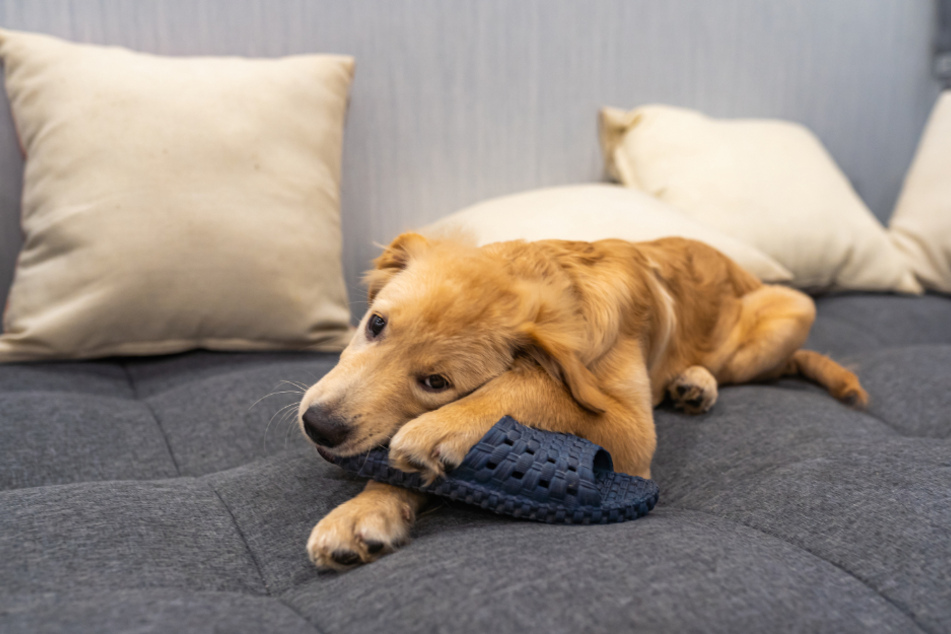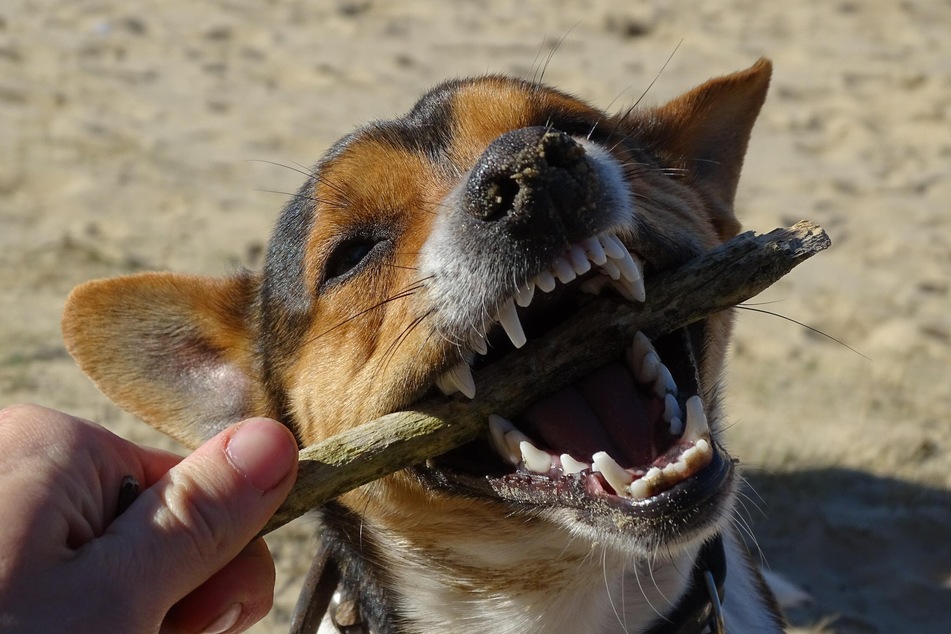If your own puppy suddenly chews on the sofa cushion, shoes, or table leg, you don’t need to doubt your dog training skills right away, as this behavior is usually a sign of tooth change in dogs.
Milk teeth are visible in puppies from the third week of life. Puppies have two canine teeth, six molars, and six incisors in the upper and lower jaws each. With a total of 28 milk teeth, the dental structure is usually fully developed by the ninth week of life.
As with all mammals, the milk teeth in dogs fall out during their development. Just like in toddlers, this phase is not easy for young dogs and their caregivers because the pain and changes in the teeth are not really understandable for dogs.
However, those who want to help their dog should not use products for humans, as they contain toxic substances for dogs. There are other ways to provide relief to the teething canine.
The dog guide reveals what to consider during your dog’s tooth change.
When do puppies lose their milk teeth?
Puppies start losing their milk teeth from the fourth month of life, marking the transition from puppy to adolescent. In most dogs, the tooth change is completed around the sixth month of life. Larger breeds usually begin the tooth change earlier than smaller dogs.
In dogs, it is usually the case that the largest teeth change last. These are the front molars in the upper jaw (premolars).
The exact timing of a dog having all 42 teeth fully developed depends on the breed and size of the respective animal.
Tip
Dogs should be accustomed to having their teeth checked as early as possible, preferably as puppies. Allowing these touches makes it easier for dental checks during tooth changes, dental care for dogs, and veterinary examinations.

Recognizing tooth changes in dogs
When the behavior of the puppy or young dog suddenly changes, dog owners quickly become concerned. If the dog starts chewing on table legs, shoes, or other objects suddenly, this is usually not a sign of bad behavior but indicates the beginning of tooth change.
Signs of tooth change in dogs:
- Excessive and sometimes excessive chewing
- Increased licking of the teeth
- Milk teeth lying around
- Light bleeding in the mouth and blood spots, e.g., on the sleeping area
If you notice that the dog is in the process of changing teeth, you should regularly check the teeth to detect possible problems early on.
Possible problems during tooth change
Often, dogs swallow their milk teeth, which is usually not a problem. Many dogs suffer from pain and itchy gums during tooth changes. However, the tooth change can also cause additional health problems for the dog.
Difficulties during tooth change:
- Persistent milk teeth (milk teeth do not fall out)
- Bleeding gums
- Inflammation in the oral cavity
- Swelling in the face
- Bad breath
- Dog does not eat and/or drink
- Increased salivation
- Diarrhea
- Sleep disturbances
- Fever
- Restlessness
- Lethargy
If you notice these or other problems in the dog, it should be examined medically.
Help for dogs during tooth change
Unfortunately, dog owners cannot explain to their four-legged friends that what is happening to their teeth is entirely normal and not harmful. Nevertheless, no one has to watch helplessly as the dog suffers.
The right aids for a dog in tooth change It helps a dog in tooth change to chew a lot. Working with the teeth alleviates pain and loosens milk teeth. It is recommended to offer the dog various chew items.
Chew Toys
The selection of chew toys and similar items for dogs is huge. It may be that dog owners have to try different products until they find the suitable chewing toy for their four-legged friend.
For wood or similar materials, care should be taken that the object cannot splinter. There are special chew roots and woods, such as olive wood, coffee wood, or natural rubber. Other items for chewing and biting include rope toys, rubber toys, stuffed animals, teething rings, chew sticks, or cheese sticks.
The versatile Kong is also suitable as support during tooth changes. If the dog is not used to the Kong, it should be given to him lightly frozen at the beginning. In terms of size, dog owners should choose a slightly larger size rather than too small to avoid the tongue getting stuck.
If dog owners do not want to buy toys, they can offer the dog a few discarded shoes to chew on. If the dog likes to chew on fabric, you can stuff the leg of an old pair of jeans, close it at both ends, and give it to the dog.
Chew Snacks
If owners want to offer their dogs chew snacks, their preferences and the size of the dog are decisive. If dogs like carrots, that is ideal for tooth changes. For smaller dogs, rabbit horns or pig noses are suitable for chewing. Larger dogs can be given ox tongues and tails, as well as beef or pig ears, which should then replace a meal for the dog.
For chewing and sucking, owners can freeze chamomile tea with treats in ice cube trays for their dog. The cooling relieves pain, and chamomile has an antibacterial effect.
Especially with frozen chew items and food snacks, dog owners should not overdo it, as these can cause digestive problems in dogs.
Tip
Dog owners should observe their dog during tooth changes to see what the animal needs to chew on. What the teething dog likes to bite on corresponds to its chewing needs. If it’s the sofa cushion, he needs something soft like a stuffed animal. If he nibbles on the chair leg, then harder chew toys, e.g., made of wood, are recommended.

Proper behavior towards a dog during tooth changes
If the dog is in the process of changing teeth, it may happen that he chews on the chic furniture or favorite shoes. However, dog owners should not shout at or punish their dog because the animal has no malicious intentions but is simply trying to ease the tooth change.
For owners with a dog in tooth change, it is important to stay calm, show tolerance, and offer the dog enough chewing alternatives.
To relieve the teeth and prevent teeth from breaking, owners should avoid fetching and tug-of-war games with a teething dog. These activities could promote additional pain or tooth breakage.
If the dog has problems with dry food, it can be soaked or switched to wet food.
Regular dental checks are also a must for dog owners when the dog is teething to be able to react in time and take the dog to a veterinary practice if necessary.
The tooth change can be a very challenging phase for dogs, during which they urgently need the patience, love, and support of their owners.


